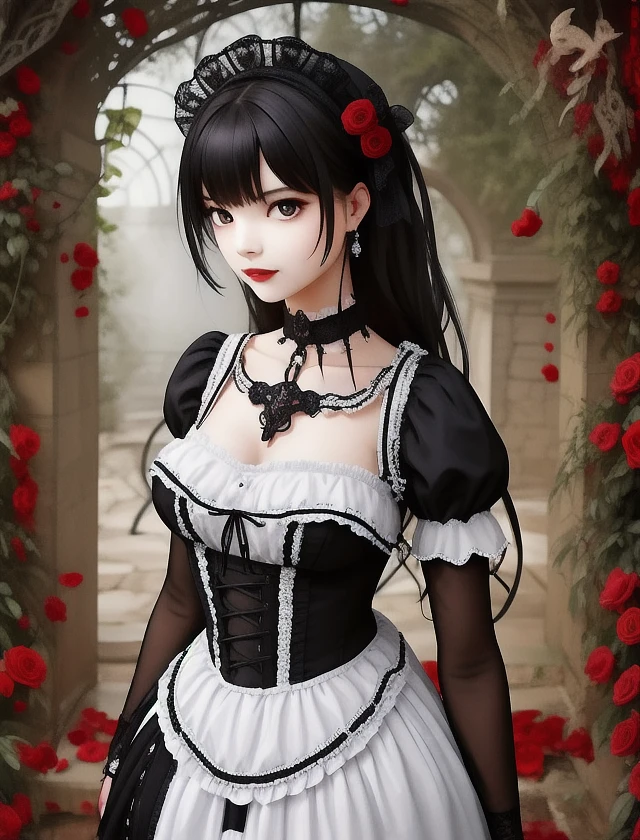RayVietii_DryRender-Diabolical_Diffusion
RayVietii-DRm8.0====================================
There are 2 models:
DRm: DryRender-mae Anime Style
SRm: SemiReal-mae
====================================
Fine-tuned vanilla SD1.5 that trained to mimic my art style [My Instagram: https://www.instagram.com/ray_vietii ]
I did UNet of effective_total_steps = ( 2500 steps + ( 500 dataset_image_count )) iteration count ) to make the model understood what the style is without specifying some sort of "trigger word". And then i merge my LoRa which is based on the same art style,,my art style, but my LoRa has already learned the context and tags and or text_encoder_lr.
What exactly the recipe is?
What i did is making 2 variants, base1 is having high unet_lr (6e-5)+LoRa, and base2 is lower unet_lr (2e-5)+LoRa, and then base0 is another 2e-5 without LoRa.
And next thing i did was merging these bases: base1[0.4] + base2[0.6] = base1+2.
And then base1+2 [0.8] + base0[0.2], and so on, which represents as "iterations".
I did that recipe with slightly different and keep merging the variants to itself. With that, despite only have X images training, it now have pretty much broad variations.
Just like any other basemodel, it's cohesive and stable, no more SD1.5 vanilla leaking, just pure style distillation, and Mean Average Emergent or " MaE is my method, which allows me to "sculpt" the base vanilla SD1.5 with only 43 image of dataset(as of iteration 1).
It is expected to be murky and muddy because of this method, but with the right prompting, it will generate some decent good images.
MaE is way much efficient since if you're having bare minimum dataset.
Additional details that is not exactly relevant, because this "research" is done for LoRa that being used within my models:
DDPM scheduler setting comparison:
RayVietii-DryRender:
βs = 0.0 | βe = 0.0095
Kohya_ss default setting:
βs = 0.00085 | βe = 0.012
The Empirical Standard Value:
βs = 0.0001 | βe = 0.02
Judging from the formula, Xt = βs...βt = X0 (simplified), (t1, t2, ..., tn )
> While it may seem complex at first, the process is actually quite straightforward. Here, Xₜ represents the image at timestep t , and Xₜ₋₁ represents the image at the previous timestep. ϵis our randomly generated unit Gaussian noise. Since it is a unit Gaussian, its variance is one. When we multiply it by the term square root of βt, its variance becomes βt. We also scale down Xₜ₋₁ by square root of 1-βt to ensure that the variance of Xₜ does not grow when we add noise. This is essentially a balancing term.
The βt parameter controls the amount of Gaussian noise added to the image. The authors call this the variance schedule, which ramps up at higher values of t. In the original work by [Ho et al. (2020)](https://arxiv.org/abs/2006.11239), betas are put in a linear space from β1=0.0001 to βT=0.02 with T=1000 diffusion steps. They are relatively small compared to the normalized image pixel values between [−1,1].
What does this mean is, it started with no denoising at all, keeping the dataset image as is, which means X1 = X0 (original image). βe = 0.0095, this value is significantly smaller then the recommended 0.02, which means, with 0.0095 β, the dataset image is never truly become a pure noise, which give us an answer of why it's smart at predicting, because this model have no hallucination (pure noise) to start off during reverse process (denoising).
What is RayVietii_DryRender-Diabolical_Diffusion?
RayVietii_DryRender-Diabolical_Diffusion is a highly specialized Image generation AI Model of type Safetensors / Checkpoint AI Model created by AI community user RayVietii. Derived from the powerful Stable Diffusion (SD 1.5) model, RayVietii_DryRender-Diabolical_Diffusion has undergone an extensive fine-tuning process, leveraging the power of a dataset consisting of images generated by other AI models or user-contributed data. This fine-tuning process ensures that RayVietii_DryRender-Diabolical_Diffusion is capable of generating images that are highly relevant to the specific use-cases it was designed for, such as anime, base model, girls.
With a rating of 0 and over 0 ratings, RayVietii_DryRender-Diabolical_Diffusion is a popular choice among users for generating high-quality images from text prompts.
Can I download RayVietii_DryRender-Diabolical_Diffusion?
Yes! You can download the latest version of RayVietii_DryRender-Diabolical_Diffusion from here.
How to use RayVietii_DryRender-Diabolical_Diffusion?
To use RayVietii_DryRender-Diabolical_Diffusion, download the model checkpoint file and set up an UI for running Stable Diffusion models (for example, AUTOMATIC1111). Then, provide the model with a detailed text prompt to generate an image. Experiment with different prompts and settings to achieve the desired results. If this sounds a bit complicated, check out our initial guide to Stable Diffusion – it might be of help. And if you really want to dive deep into AI image generation and understand how set up AUTOMATIC1111 to use Safetensors / Checkpoint AI Models like RayVietii_DryRender-Diabolical_Diffusion, check out our crash course in AI image generation.
Popularity
Info
Latest version (RayVietii-DRm8.0): 1 File
About this version: RayVietii-DRm8.0
README
Resumed Training and Neural Attentions Tweaking:
to_rgb and conv_out x1.1
resnet, conv1 and conv2 x1.15
midblock, attn x1.05
to_k, to_q, to_v x1.05
Working captions:
a human female
proportion slim
proportion slim tall
proportion tiny
proportion normal
proportion diminutive
proportion zaftig
proportion curvaceous
sidebangs
Attire Segmentations:
half sleeves
long sleeves
mini sleeves
micro sleeves
puffed sleeves
loose neckline
strap neckline
normal neckline
upper midriff cut
multicolor
Anatomy:
sidebust
sideboobs
right hand, left hand, both hands
Pose:
facing left, facing right, facing front
look away
leaning forward
Lighting:
normal lighting
dark lighting
dim lighting
nighttime
daytime
10 Versions
Go ahead and upload yours!





